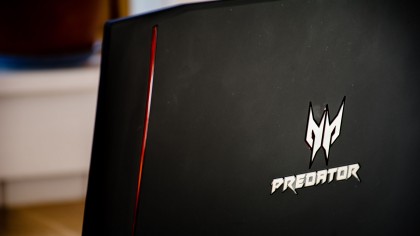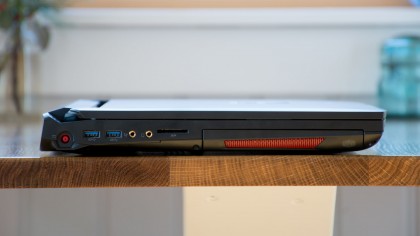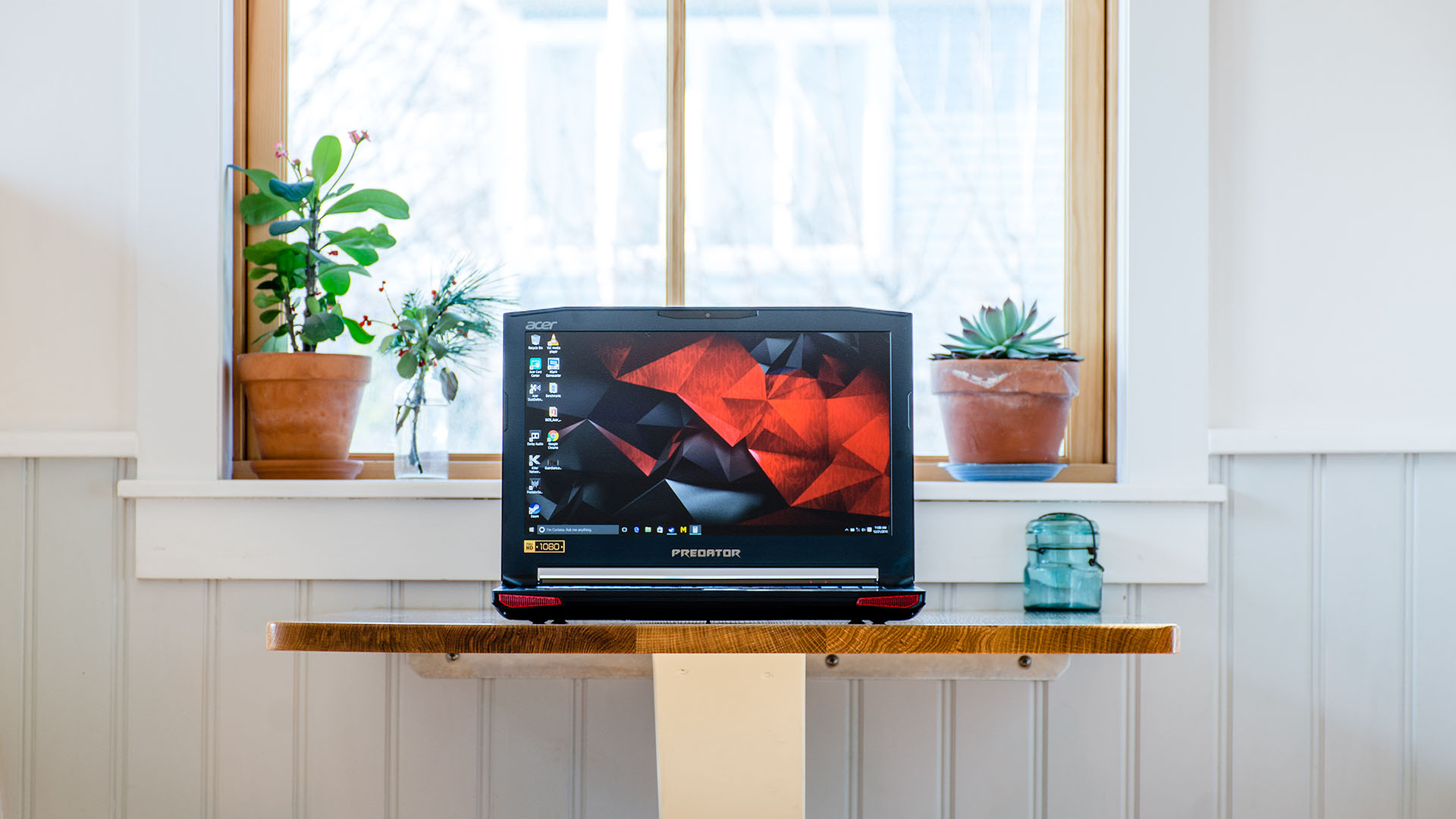Why you can trust TechRadar
The Acer Predator 15 weighs a whopping 7.5 pounds (3.4kg) and measures 1.5 inches (3.8cm) at its thickest point when closed. Compare that to the MSI GS60 Ghost Pro, which is a positively svelte 0.78 inches (1.9cm) and weighs just 4.2 pounds (1.9kg). It weighs as much as the Origin EON 15-X, but its overall dimensions are larger than the Predator 15. The real difference there is the Origin houses a full-fledged desktop CPU, whereas the Predator sports a completely mobile chipset.
The weight of the Predator it one of its biggest drawbacks. With so many computers racing to the bottom as far as mass is concerned, a 7.5-pound laptop almost seems unfashionable. Add in the little extra weight of the AC adapter and the FrostCore cooler, and the Predator makes its presence known to your back, if you're carrying it in a laptop bag. Sitting it on your lap isn't too terrible, but if you're used to a lightweight notebook, it will surprise you when try to adjust it on your lap.

Spec sheet
Here is the Acer Predator 15 configuration sent to TechRadar for review:
- CPU: 2.6GHz Intel Core i7-6700HQ (quad-core, 6MB cache, up to 3.5GHz with Turbo Boost)
- Graphics: Nvidia GeForce GTX 980M (4GB GDDR5 RAM), Intel HD Graphics 530
- RAM: 32GB DDR4 (2133 MHz, expandable to 64GB)
- Screen: 15.6-inch, 1,920 x 1,080 Active Matrix TFT Color LCD
- Storage: 512GB PCIe NVME SSD, 1TB HDD (7,400 RPM)
- Ports: 4x USB 3.0, 1x USB 3.1/Thunderbolt 3, HDMI, DisplayPort, Ethernet, SD reader, headphone jack, microphone jack
- Connectivity: Killer Wireless-AC 1535 , Gigabit Ethernet, Bluetooth 4.2
- Camera: Front-facing 1,280 x 720 webcam
- Weight: 7.5 pounds (3.4 kg)
- Size: 15.4 x 11.8 x 1.5 inches, 39.1 x 30 x 3.8 centimeters (W x D x H)

As big as the Acer Predator 15 is physically, its price is also quite heavy. At $2,499 (about £1,249, AU$2,999, though not as well equipped abroad) as configured, this is a serious machine. However, just as its size is justifiable for everything Acer managed to fit into it, the price is also a fair reflection of everything it includes.
The price tag seems exactly right for this machine. It's a premium piece of hardware, but it doesn't feel like a "luxury" item. Every part of it is designed to fit a gamer's needs, and the price point reflects that.
The Predator 15 is neck and neck with the EON15-X as far as price, but the EON15-X beats the Predator in performance. This is no doubt due to its desktop processor and 8GB of GDDR5 RAM, compared to the 4GB GDDR5 in the Predator. While the EON15-X is able to best the Predator in every performance test, the Predator beats it in other categories that still make it a good value.

It also comes with a larger 512GB solid-state drive (SSD) and a 1TB, 7,400 rpm hard drive, beating both the GS60 and the EON15-X. An SSD makes all the difference in games like Just Cause 3, which is notoriously heavy on load times when running off a traditional hard drive. Black Ops 3, Just Cause 3, and Grand Theft Auto 5 – which are all fairly recent, top-selling games – each take up 40GB of room, SSD space goes fast on other computers, but the Predator has room to spare.
Sign up for breaking news, reviews, opinion, top tech deals, and more.
Other, less expensive configurations of the Predator 15 exist, with the entry-level version dropping down to a 128GB SSD and a GeForce 970M with 3GB of GDDR5 RAM. That version costs $1,499 (£1,249,AU$2,999).
The cheaper version comes with only 16GB of RAM. I say "only", because the configuration we tested includes 32GB. All models are upgradeable to 64GB, however, and all the machines in the Predator line-up have the same Skylake processor and 1TB hard-drive standard in the US.
Current page: Specifications and value
Prev Page Introduction and design Next Page Performance and features